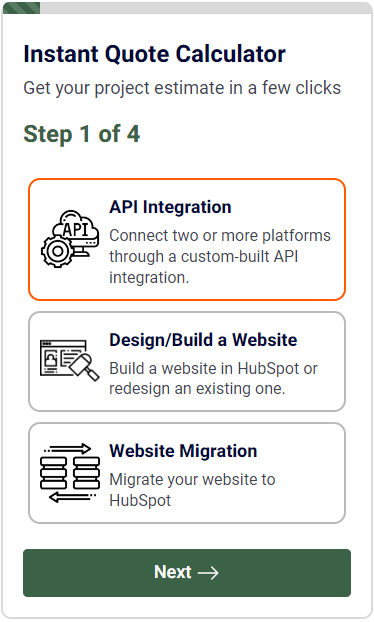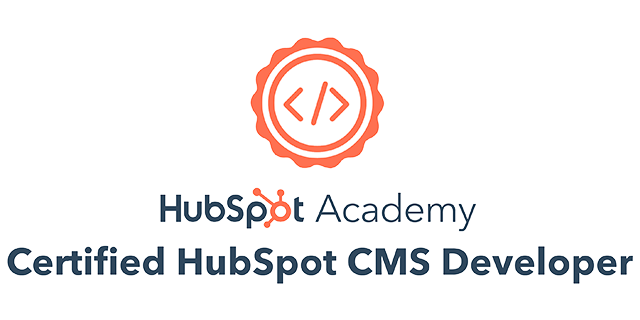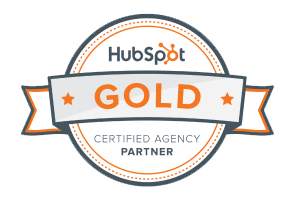HubSpot is an impressive platform for many reasons, particularly because it’s designed to be flexible. With a variety of apps and API integrations, HubSpot has a variety of tools to help you build a website. However, if HubSpot doesn’t sync with the tools you need, offer specific functionalities, or solutions to your problems, you can build your own. HubSpot CMS enables developers to create custom apps and API integrations.
Continue reading to learn more about custom apps and custom API integrations.
What are HubSpot Custom Apps and Custom API Integrations?
HubSpot works with several apps, including Google Calendar, Zoom, Jira, or more. But when that’s not enough, you can create custom apps or purchase them on the HubSpot App Marketplace. A custom app is a type of integration. It can be installed and reused across your HubSpot account. The app is accessible on the account’s Connected Apps page (Settings > Integrations > Connected Apps), so that users can easily uninstall or manage it
HubSpot API integrations, on the other hand, are ad-hoc solutions that let you add advanced functionality to your account, sync with other tools, and import or export data. Simply put, integrations let you transfer information from one system to another. Custom API integrations are portal-specific, meaning that the integration needs to be performed on every HubSpot portal.
While the two intend to solve problems, HubSpot custom apps and custom API integrations differ at the end-use levels.
How do Custom Apps and Integrations work?
HubSpot is an event-driven system. This means custom apps or API integrations listen to the events in the HubSpot system and synchronize the data with a third-party platform or system.

Custom apps (but not integrations) can also be used to extend the default functions in the HubSpot portal and add new custom functions. Custom apps and custom integrations share many similarities, and the main difference is the end-use levels.
Why do you need custom apps?
In our multi-cloud world, it’s practically impossible for one platform to provide all the functionalities that you may need for a website. So even though HubSpot is a robust platform, it’s missing some key features. HubSpot is a great customer relationship management (CRM), content management system (CMS), and Marketing Automation system. Yet, it doesn’t provide businesses everything they need, including ecommerce, inventory, and accounting functionalities.
With custom apps and API integrations, developers can expand HubSpot’s default functionality and connect all your business-critical systems together.
HubBase uses a two-phase approach. What is it? And why do we do that?
When creating custom integrations and apps for HubBase, we use a two-phase approach. The reason is because custom API integration is software development. It’s software engineering, after all. We’re dealing with many unknowns.
As Bill Langley said, “The perfect project plan is possible if one first documents a list of all the unknowns.” This is why Phase I is a discovery period. We take the time to find any unknowns. From there, we set up more accurate expectations and scope.
At the end of Phase I, we have a project plan, or blueprint, that we can use to execute on in Phase II, the project execution stage.
Simply put—any platform that has an API. At HubBase, we have created a wide range of integrations. Check out a sampling of our custom API integrations below:
- HelloSignWith this integration, one of our clients used HelloSign to onboard their customers. We used middleware hosted on AWS Lambda, HubSpot API and HelloSign API for this integration.
- SendGripThis integration allowed a healthcare startup to send out emails to customers using SendGrid email templates as soon as they were added to HubSpot CRM. We used HubSpot Timeline API, a HubSpot app and SendGrid API to complete this project.
- GmailOne Silicon Valley client needed to automatically track an email sender as a contact in HubSpot as soon as the email arrived in their Gmail inbox. We used Google cloud platform pub/sub, a middleware, and HubSpot API to build this.
- TwilioConnecting Twilio and HubSpot via Twilio webhook, a middleware, and HubSpot API, this integration logged every call in HubSpot and matched it to the corresponding contact.
- NetlifyThrough a JavaScript plugin, HubSpot forms API and AJAX, this integration connects forms on Netlify-hosted websites to HubSpot forms.
- StripeThe Stripe JS SDK makes it possible to accept payments on the HubSpot API.
- SquarespaceUsing HUbSpot forms API and AJAX, this integration allows Squarespace forms and HubSpot forms to speak to each other. Every time a contact submits a form in Squarespace, the person is added as a contact in HubSpot.
- ShopifyEvery time a new order is received in Shopify, it is added to the HubSpot CRM. We accomplished through Shopify webhooks and HubSpot API.
- WordPressUsing WordPress forms and HubSpot forms, we created several WordPress plugins.
Can I add a custom HubSpot CRM object with a custom app?
HubSpot offers only limited CRM objects, which includes contacts and companies, so there may be a lot missing in this area. This might make you want to consider adding a custom CRM object or entity. Well, with HubSpot Apps, you can add a custom CRM object that corresponds to your business, i.e. a car business can add a car CRM object.
Do I need an Enterprise HubSpot subscription to add a custom CRM object?
Great news—you do not need to have an Enterprise subscription to add a custom CRM object.
Why should I develop a custom app?
You can use services like Zapier, API Fuse, automate.io, or an app from the HubSpot marketplace to add in the functionalities that you need. However, you will not have full control. This means that it’s not tailored to your specific needs, and you won’t be able to change them so that they work for you. But you can avoid this problem by developing a custom app. After all, who knows exactly what you need more than you.














